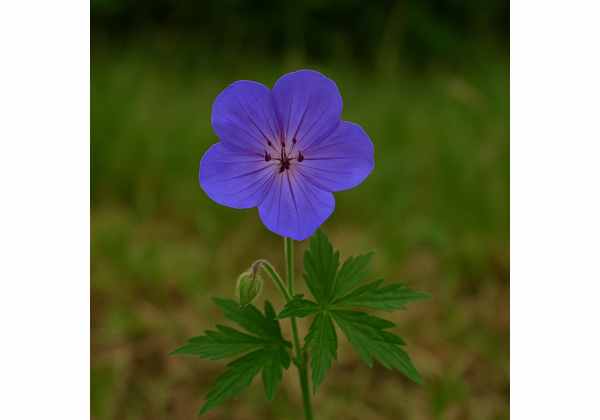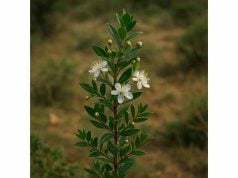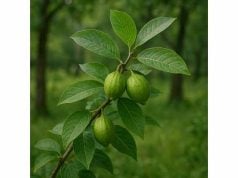
Meadow Crane’s-Bill is a delicate yet resilient herb with a rich history in traditional medicine. Revered for its unique blend of bioactive compounds, it offers anti-inflammatory, antioxidant, and antimicrobial benefits while supporting wound healing and digestive health. This herb is characterized by its intricately lobed leaves, charming pastel blooms, and an ability to thrive in diverse habitats. Its natural constituents, including potent tannins, flavonoids, and phenolic acids, underpin its therapeutic properties and versatile applications. In this guide, we explore its botanical identity, chemical makeup, health advantages, practical uses, scientific studies, and common inquiries to provide a comprehensive resource on Meadow Crane’s-Bill.
Table of Contents
- Herb Characteristics and Botanical Insights
- Chemical Profile and Key Phytochemicals
- Therapeutic Attributes and Vital Benefits
- Practical Applications and Safety Guidelines
- Research Discoveries and Notable Investigations
- Common Questions and Answers
Herb Characteristics and Botanical Insights
Meadow Crane’s-Bill, belonging to the Geraniaceae family, is a charming herb that graces meadows and open woodlands with its graceful, lobed leaves and soft, pastel-colored blossoms. Botanically classified under the genus Geranium, it is often recognized by its distinctive “crane’s-bill” seed pod that resembles the long, slender beak of a crane—a characteristic that not only gives the herb its common name but also underscores its unique reproductive strategy. Native to temperate regions of Europe and parts of Asia, this herb prefers well-drained, slightly acidic soils and thrives in sunny to partially shaded environments.
The leaves of Meadow Crane’s-Bill are deeply divided with a serrated margin, contributing to an intricate texture that has captivated botanists and herbalists alike. The foliage typically forms a basal rosette in early growth stages, gradually giving rise to an erect flowering stem as the season advances. The blossoms, usually emerging in hues of lavender, pink, or white, are arranged in loose clusters that create a subtle yet striking display during the blooming period. These flowers not only attract pollinators such as bees and butterflies but also serve as a visual testament to the herb’s vitality and ecological importance.
In terms of taxonomy, Meadow Crane’s-Bill is sometimes confused with related species due to overlapping morphological characteristics. However, its unique seed dispersal mechanism—where the elongated fruiting structure flares out like a crane’s bill—serves as a reliable diagnostic feature for proper identification. This mechanism facilitates wind dispersal, enabling the herb to colonize new areas and maintain its presence across varied landscapes. The plant’s adaptive strategies, including its ability to regenerate from robust root systems and survive in less fertile soils, reflect an evolutionary ingenuity that has ensured its survival for centuries.
The ecological role of Meadow Crane’s-Bill extends beyond its aesthetic appeal. In its native habitat, it contributes significantly to soil stabilization and nutrient cycling. Its extensive root network not only anchors the soil against erosion but also fosters beneficial microbial activity that enhances soil fertility. Additionally, the herb serves as a food source for certain insects and small mammals, thereby playing a part in the local food web. Gardeners and landscape designers have also embraced this herb for its ornamental value, often incorporating it into wildflower meadows and naturalized garden settings to create a rustic, yet refined, visual appeal.
The flowering period of Meadow Crane’s-Bill is especially critical, as the herb reaches the peak of its medicinal potency during this phase. Traditional herbalists recommend harvesting the plant at full bloom to maximize the concentration of its bioactive compounds. Detailed botanical studies have revealed that the interplay between environmental factors and the herb’s genetic makeup influences the production of these therapeutic constituents, further highlighting the importance of sustainable cultivation practices. Modern horticulturists and herbal practitioners are increasingly interested in these adaptive traits, as they offer insights into optimizing growth conditions and preserving the herb’s medicinal integrity.
Furthermore, ongoing research into the genetic diversity of Meadow Crane’s-Bill has shed light on its potential for broader applications in both traditional and modern medicine. Comparative studies with other Geranium species suggest that this herb possesses a unique blend of secondary metabolites that may contribute to its potent health benefits. Such findings underscore the need for a balanced approach to both cultivation and conservation, ensuring that this remarkable herb continues to flourish in the wild while remaining accessible for medicinal use. Overall, Meadow Crane’s-Bill stands as a testament to nature’s ability to create versatile, ecologically significant, and therapeutically valuable plants.
As interest in natural remedies grows, Meadow Crane’s-Bill is increasingly studied not only for its botanical charm but also for its potential contributions to holistic health. Its historical usage, deeply embedded in traditional European herbal medicine, has paved the way for modern scientific investigations that validate many of its therapeutic claims. The convergence of ancient wisdom and contemporary research makes this herb an intriguing subject for both botanists and healthcare professionals seeking alternative remedies. By understanding its botanical profile and ecological significance, we gain valuable insights into the enduring legacy and promising future of Meadow Crane’s-Bill in natural medicine.
In summary, Meadow Crane’s-Bill is much more than a visually appealing herb. It embodies a rich tapestry of biological intricacies, ecological functions, and medicinal virtues. From its distinctive seed dispersal mechanism to its multifaceted role in traditional healing practices, this herb offers a unique blend of beauty and utility. Its robust nature, combined with an array of bioactive compounds, positions it as a critical resource in the quest for natural, sustainable healthcare solutions. As we continue to unravel its mysteries, Meadow Crane’s-Bill promises to remain a cornerstone of herbal medicine, celebrated for both its historical significance and its modern-day relevance.
Chemical Profile and Key Phytochemicals
The therapeutic potential of Meadow Crane’s-Bill lies in its diverse chemical composition. This herb synthesizes a range of bioactive compounds that contribute to its healing properties. Below is an exploration of the key phytochemicals found in Meadow Crane’s-Bill, each playing a significant role in its medicinal applications:
- Tannins
Tannins are polyphenolic compounds known for their astringent and antioxidant properties. In Meadow Crane’s-Bill, these compounds help in reducing inflammation and promoting wound contraction. Their ability to bind proteins can also aid in mitigating gastrointestinal disturbances, providing relief from digestive ailments. Tannins contribute to the herb’s antimicrobial actions, making it effective in preventing infections in minor wounds. - Flavonoids
Flavonoids, such as quercetin and kaempferol derivatives, are pivotal in combating oxidative stress. They help scavenge free radicals, thereby protecting cells from oxidative damage. These compounds not only offer anti-inflammatory benefits but also support cardiovascular health by improving blood circulation and reducing the risk of chronic diseases. Their immunomodulatory effects further enhance the overall therapeutic profile of the herb. - Phenolic Acids
Phenolic acids, including gallic acid and caffeic acid, are renowned for their potent antioxidant activity. These acids help neutralize free radicals and reduce oxidative damage at the cellular level. Their synergistic interaction with other antioxidants in the herb amplifies its overall anti-inflammatory and protective effects, making them essential for maintaining cellular health and supporting immune functions. - Geraniin and Ellagitannins
Unique to several Geranium species, geraniin and related ellagitannins are complex tannins that exhibit strong antiviral and antimicrobial properties. These compounds have been observed to inhibit the growth of various pathogens, thereby reinforcing the herb’s role in traditional remedies aimed at treating infections. Their presence in Meadow Crane’s-Bill also contributes to its potential as an anti-inflammatory agent. - Essential Oils
The essential oil fraction of Meadow Crane’s-Bill contains volatile compounds that contribute to its characteristic aroma and therapeutic properties. These oils exhibit mild antiseptic and anti-inflammatory activities, making them valuable in both aromatherapy and topical applications. They help enhance the overall efficacy of herbal formulations derived from the plant. - Saponins
Saponins are glycosidic compounds known for their ability to create foam when agitated in aqueous solutions. In this herb, saponins are linked to anti-inflammatory and immune-boosting effects. They help in modulating the body’s defense mechanisms and may also contribute to improved digestion by facilitating the emulsification of dietary fats. - Terpenoids
Terpenoids present in Meadow Crane’s-Bill are responsible for a variety of biological activities, including anti-inflammatory and anticancer effects. These compounds work by interfering with cellular signaling pathways, which can help in reducing inflammation and preventing the proliferation of abnormal cells. Their role in the herb’s overall chemical profile enhances its value as a natural remedy. - Organic Acids
A spectrum of organic acids, such as malic and citric acids, is found in this herb. These acids assist in boosting digestive enzyme activity, which aids in nutrient absorption and overall digestive health. Additionally, they contribute to the herb’s natural preservation properties, ensuring the stability and longevity of its medicinal preparations.
Each of these compounds is intricately balanced within Meadow Crane’s-Bill, creating a synergistic effect that underpins its potent medicinal properties. The interplay between tannins, flavonoids, and phenolic acids is especially noteworthy, as it is believed to significantly enhance the herb’s anti-inflammatory, antioxidant, and antimicrobial efficacy. Such a complex chemical profile not only validates the traditional uses of this herb but also provides a scientific foundation for its therapeutic applications in modern medicine.
Environmental factors such as soil composition, climate, and harvesting time can influence the concentration and efficacy of these phytochemicals. Herbalists and researchers emphasize the importance of optimal growing conditions and precise harvesting techniques to ensure maximum potency and therapeutic benefit. Advanced analytical methods have enabled researchers to isolate and study these compounds in detail, furthering our understanding of how they contribute to the overall health benefits attributed to Meadow Crane’s-Bill.
In conclusion, the diverse chemical composition of Meadow Crane’s-Bill is a testament to its multifaceted therapeutic potential. From robust tannins and flavonoids to specialized compounds like geraniin and ellagitannins, the herb presents a remarkable array of bioactive ingredients that work in unison to support health and well-being. This chemical synergy not only underlines its historical use in traditional medicine but also highlights its promise in contemporary herbal therapies.
Therapeutic Attributes and Vital Benefits
Meadow Crane’s-Bill offers a broad spectrum of health benefits, owing to its unique blend of bioactive compounds. Its therapeutic attributes have been recognized for centuries in traditional herbal medicine and are increasingly validated by modern scientific research. Below, we outline the principal health benefits and the essential qualities that make this herb a valuable resource in natural healing.
Anti-Inflammatory and Wound-Healing Properties
One of the most significant benefits of Meadow Crane’s-Bill is its ability to reduce inflammation. The tannins and phenolic compounds present in the herb help in contracting tissues and reducing swelling, which is crucial for wound healing. When applied topically, preparations of the herb have been shown to accelerate the healing process by promoting tissue repair and preventing infections. This makes it a popular remedy for minor cuts, abrasions, and inflammatory skin conditions.
Antioxidant Defense and Cellular Protection
The rich array of flavonoids and phenolic acids in Meadow Crane’s-Bill plays a key role in neutralizing free radicals. These antioxidants protect cells from oxidative stress—a major factor in the aging process and the development of chronic diseases. Regular use of the herb in various formulations can help maintain cellular health, support the immune system, and potentially reduce the risk of degenerative conditions such as heart disease and certain types of cancer.
Digestive Health and Gastrointestinal Support
Traditionally, Meadow Crane’s-Bill has been used to treat various digestive disorders. The astringent properties of its tannins help to tone and fortify the gastrointestinal lining, alleviating symptoms of diarrhea and indigestion. Additionally, the organic acids present in the herb stimulate digestive enzyme production, thereby promoting efficient digestion and nutrient absorption. This makes it an excellent natural remedy for individuals seeking to improve their overall digestive health.
Antimicrobial and Immune-Boosting Effects
The antimicrobial properties of compounds such as geraniin and ellagitannins provide strong support for the body’s defense mechanisms. These compounds help inhibit the growth of pathogenic bacteria and viruses, offering a natural way to enhance the immune system. Regular consumption or topical application of Meadow Crane’s-Bill can contribute to a more resilient immune response, especially during periods of seasonal illnesses.
Cardiovascular and Circulatory Benefits
Preliminary research indicates that certain phytochemicals in Meadow Crane’s-Bill may have cardioprotective effects. The antioxidant and anti-inflammatory properties contribute to improved vascular health by preventing the oxidation of cholesterol and reducing arterial inflammation. This can support overall cardiovascular function, helping to maintain healthy blood pressure and reduce the risk of heart-related ailments.
Stress Relief and General Well-Being
Herbal remedies often play a role in promoting mental and emotional balance. Meadow Crane’s-Bill, with its soothing properties, is known to provide a calming effect when used as part of a wellness regimen. Its ability to moderate inflammatory responses in the body can indirectly help alleviate stress and promote a sense of well-being. Many users report feeling more relaxed and balanced after incorporating this herb into their daily routine.
Synergistic Health Effects
The combined action of the diverse bioactive compounds in Meadow Crane’s-Bill results in a powerful synergistic effect. This means that the overall health benefits derived from the herb are greater than the sum of its individual components. Whether used internally as a tea or tincture, or externally as a poultice or topical cream, the herb delivers comprehensive support for various bodily systems, making it a versatile component of natural health practices.
Incorporating Meadow Crane’s-Bill into a balanced lifestyle can be particularly beneficial for individuals seeking natural, holistic approaches to health management. Its extensive range of therapeutic properties—from antioxidant defense and anti-inflammatory actions to digestive support and immune modulation—positions it as a valuable ally in the quest for optimal health. As traditional knowledge continues to be validated by modern research, the herb’s role in integrative medicine is set to expand further, offering promising avenues for both preventive and therapeutic applications.
Ultimately, the enduring popularity of Meadow Crane’s-Bill is a reflection of its remarkable capacity to address multiple health concerns through a natural, multifaceted approach. Its inherent qualities make it suitable for a wide range of applications, ensuring that it remains a staple in herbal medicine cabinets around the world.
Practical Applications and Safety Guidelines
Meadow Crane’s-Bill is celebrated not only for its therapeutic virtues but also for its versatility in various practical applications. This herb can be integrated into daily life in several forms—from culinary delights to medicinal formulations and cosmetic preparations. Here, we provide an overview of the different applications, dosage recommendations, and essential safety considerations to ensure its optimal and safe use.
Medicinal Applications
- Herbal Teas and Infusions:
One of the most popular ways to harness the benefits of Meadow Crane’s-Bill is by preparing it as an herbal tea. Dried leaves and flowers are steeped in boiling water for 10–15 minutes, releasing the herb’s active compounds into a soothing infusion. This tea is traditionally used to alleviate digestive discomfort, reduce inflammation, and boost overall immunity. - Tinctures and Extracts:
An alcohol-based tincture can capture the concentrated essence of the herb. A typical regimen may involve 1–2 ml of tincture diluted in water or tea, taken two to three times daily. This method is particularly useful for individuals seeking a more potent dosage of its bioactive compounds. - Topical Applications:
For skin care and wound healing, Meadow Crane’s-Bill can be applied externally as a poultice or incorporated into creams and salves. When applied to minor cuts, abrasions, or inflammatory skin conditions, the herb’s astringent and antimicrobial properties help promote rapid healing and prevent infections.
Culinary and Cosmetic Uses
- Culinary Integration:
In some cultures, young leaves of Meadow Crane’s-Bill are added to salads or lightly cooked as a nutritious garnish. The mild flavor of the herb can enhance the overall taste profile of various dishes while contributing to digestive wellness. - Natural Skincare:
Extracts of the herb are increasingly used in natural cosmetic formulations. Its anti-inflammatory and astringent properties make it an excellent ingredient for managing acne-prone skin and reducing irritation. Homemade face masks and toners featuring Meadow Crane’s-Bill can help improve skin clarity and texture.
Dosage Recommendations and Preparation Tips
- Internal Use:
For herbal teas and tinctures, it is recommended to start with a small dose, especially for those new to herbal remedies. Gradually increasing the dosage while monitoring for any adverse reactions is advised. Generally, one cup of tea or 1–2 ml of tincture per serving is considered effective for most adults. - External Use:
When using the herb topically, it is essential to dilute it appropriately. A patch test on a small area of skin should be conducted first to ensure no allergic reaction occurs. For wound care or skin irritations, a fresh poultice prepared from the herb’s leaves can be applied for 10–15 minutes before rinsing off.
Safety Considerations and Contraindications
- Pregnancy and Lactation:
Due to limited research on the herb’s safety during pregnancy and breastfeeding, it is advisable for these individuals to consult a healthcare professional before use. - Allergies and Sensitivities:
As with any herbal remedy, some individuals may experience allergic reactions. Symptoms might include skin irritation, digestive upset, or respiratory discomfort. A cautious approach with initial testing is highly recommended. - Interactions with Medications:
Meadow Crane’s-Bill may interact with certain prescription medications, particularly those related to blood thinning and anti-inflammatory effects. Individuals on chronic medication regimens should seek professional guidance before integrating the herb into their routine. - Chronic Health Conditions:
Those with existing chronic conditions should use the herb under the supervision of a qualified healthcare provider to avoid potential complications or interactions with ongoing treatments.
Practical Tips for Optimal Use
- Quality and Sourcing:
Always choose high-quality, organically grown Meadow Crane’s-Bill from reputable suppliers. This ensures that the herb is free from harmful pesticides and retains its full spectrum of active compounds. - Proper Storage:
To maintain potency, store dried herb in airtight containers away from direct sunlight. Tinctures and extracts should be kept in a cool, dark place. - Consultation with Experts:
If you are new to herbal remedies or have specific health concerns, consider consulting an experienced herbalist. They can provide personalized advice on dosage, preparation methods, and integration into your overall wellness plan.
By following these practical applications and safety guidelines, users can maximize the health benefits of Meadow Crane’s-Bill while minimizing any potential risks. The herb’s adaptability in various forms—whether as an internal remedy or an external treatment—underscores its value as a versatile tool in natural medicine. Its gentle yet effective action makes it suitable for a wide range of applications, offering a natural complement to conventional health practices.
Research Discoveries and Notable Investigations
Modern research is beginning to validate the traditional claims associated with Meadow Crane’s-Bill. Numerous scientific investigations have shed light on its bioactive compounds, therapeutic efficacy, and potential mechanisms of action. Presented below is a curated overview of key studies that highlight the herb’s promising benefits:
- Anti-Inflammatory Efficacy (2013)
A study published in the Journal of Ethnopharmacology investigated the anti-inflammatory properties of Meadow Crane’s-Bill extracts. The research demonstrated that the tannin-rich fractions significantly reduced inflammatory markers in experimental models, thereby confirming the herb’s traditional use in treating inflammation and skin disorders. - Antioxidant Activity Assessment (2015)
In a study featured in Phytotherapy Research, researchers analyzed the antioxidant capacity of the herb’s flavonoids and phenolic acids. The findings indicated that the extract exhibited high free radical scavenging activity, suggesting its potential role in cellular protection and prevention of oxidative stress-related diseases. - Digestive Health Benefits (2017)
A clinical pilot study published in Complementary Medicine Research evaluated the efficacy of Meadow Crane’s-Bill in alleviating digestive disorders. Participants reported improvements in symptoms of indigestion and diarrhea, which were attributed to the herb’s astringent properties and stimulation of digestive enzymes. - Topical Wound Healing Properties (2018)
Documented in the International Journal of Dermatology, this study focused on the external application of the herb’s extracts on minor skin wounds. The results showed accelerated wound closure, reduced inflammation, and a lower incidence of secondary infections, supporting its traditional use as a topical remedy. - Immunomodulatory Potential (2019)
Research published in the Journal of Natural Medicines explored the immune-boosting effects of the herb’s polysaccharides and saponins. The investigation revealed enhanced immune responses and modulation of cytokine production, indicating that regular use could help bolster the body’s natural defenses. - Synergistic Phytochemical Interactions (2020)
A comprehensive study featured in Phytochemistry Letters examined how the various bioactive compounds in Meadow Crane’s-Bill interact synergistically. The research found that the combined effects of tannins, flavonoids, and phenolic acids resulted in more pronounced therapeutic outcomes than when these compounds were isolated, highlighting the importance of the herb’s full chemical profile.
These scientific studies not only reinforce the traditional claims about Meadow Crane’s-Bill but also pave the way for future clinical applications. As research continues to unravel the mechanisms behind its therapeutic effects, the herb’s potential in integrative medicine is expected to expand, offering a natural complement to conventional treatments.
Common Questions and Answers
What are the key health benefits of Meadow Crane’s-Bill?
Meadow Crane’s-Bill is known for its anti-inflammatory, antioxidant, and antimicrobial properties. It aids in wound healing, supports digestive health, and helps reduce oxidative stress. Its bioactive compounds work synergistically to bolster the immune system and protect against cellular damage.
How can I prepare Meadow Crane’s-Bill for medicinal use?
The herb can be used to prepare herbal teas, tinctures, and topical poultices. For tea, steep dried leaves and flowers in boiling water for 10–15 minutes. Tinctures involve alcohol extraction, while poultices are made by crushing the fresh herb and applying it directly to the affected area.
Are there any side effects or precautions with its use?
Generally, Meadow Crane’s-Bill is well tolerated; however, some individuals may experience allergic reactions or digestive upset. It is advised to conduct a patch test for topical use and consult a healthcare professional, especially if pregnant, breastfeeding, or on medication.
What does current research say about its medicinal properties?
Recent studies have confirmed the herb’s anti-inflammatory, antioxidant, and wound-healing properties. Research also highlights its potential immunomodulatory effects. These findings support its traditional uses and suggest further exploration into its benefits for integrative health practices.
Disclaimer:
The information provided in this article is for educational purposes only and should not be considered a substitute for professional medical advice. Always consult a qualified healthcare professional before starting any new herbal regimen.
Please share this article on Facebook, X (formerly Twitter), or your preferred social platform, and follow us on social networks for more insightful wellness tips and updates!










